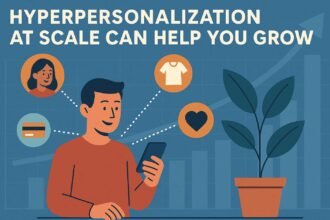In the fast-paced world of digital marketing, it’s not just a good idea to stay ahead of the curve; it’s necessary to stay alive. For years, search engine optimization (SEO) has been the most important thing to do to get noticed online. But now a stronger force is coming up: GEO, or geographical marketing.
GEO is not the same as SEO; it is the next step in its growth. By targeting customers based on where they are, brands can get real foot traffic, increase sales, and build loyal local communities. Smartphones are always with us now, so location-aware marketing has gone from “nice to have” to “must have.”
This article talks about why GEO is important, how to learn it, and how to use it with SEO to rule both online and offline spaces.
Why SEO Alone Isn’t Enough
Backlinks, keywords, and changes to the page itself are all important parts of traditional SEO. These are still important, but they don’t take into account the most important thing that affects a customer’s decision: how close they are.
Think about it. You don’t search for “the best coffee shops in the world” when you want a cup of coffee. You search for “coffee shops near me” on Google.
This change, where users show localized intent, is now the best sign that they want to buy. Smartphones are a big part of almost every buying decision, so businesses that don’t use GEO marketing miss out on customers who are “ready to buy” and have a strong desire to do so.
SEO vs. GEO in Action
| The Main Goal | SEO Focus | GEO Keywords |
|---|---|---|
| Keywords | Wide, high-volume | Localized and based on what the customer wants and needs. Look for general solutions that are nearby and easy to find. People often search for things like “best hiking shoes” and “hiking shoe store near me.” |
| Effect on Business | Increases awareness and rankings | Brings in customers and sales right away |
How to Make a Strong GEO Marketing Plan
A good GEO strategy isn’t just one thing; it’s a whole system. The most important parts are:
1. Google My Business (GMB) is Like Your Online Shop
- Add pictures that are clear and sharp.
- Make sure your NAP (Name, Address, Phone) is the same everywhere you go.
- Use the “Posts” feature to tell people about deals and news.
- Ask for reviews and answer them.
Having a fully optimized GMB profile is one of the most important things you can do to rank well in local search.
2. Local SEO: More Than Just the Basics
- Make landing pages that are unique to each place.
- Use words that are specific to your area, like “Denver bakery.”
- Put local citations in a variety of directories.
3. Ads Based on Location—Targeting with Precision
You can use Google Ads and Facebook/Instagram Ads to:
- Aim at people who live or work near your store.
- Aim at people who have been to your competitors’ stores.
- To cut down on waste, only show ads to people who live nearby and are likely to buy something.
4. Geofencing—Real-Time Interaction
Put a digital “fence” around your store or a store that is similar to yours. When someone walks in, begin:
- A message that appears
- A text message
- A sale that only lasts for a short time
Imagine a customer walking by your café and getting a text that says, “20% off Happy Hour Latte!” That’s what GEO power means.
5. Beacon Technology: Making Stores More Personal
Put little Bluetooth beacons in your store to:
- Send deals that are specific to the item.
- Help customers find their way around the store.
- Make each customer’s shopping experience very personal.
6. Localized Content: Get Involved in Your Community
Don’t just talk about what you have. Share:
- Stories about people who live there
- Businesses in the area working together
- Writing about things that happen in the community
7. Reviews and Ratings Are a Lot of Social Proof
- Get happy customers to write reviews.
- Respond to all comments, good or bad.
- Build trust by using sites like Yelp, TripAdvisor, and GMB.
GEO Marketing in Action: Real-Life Examples
- Coffee Shop: Uses geofencing to find people who work in offices. Every morning, people who walk by get a “Happy Hour Latte” push notification, and sales go through the roof.
- Auto Repair Shop: Uses terms like “tire repair near me” to run ads that show up within 5 miles of the shop. Their GMB profile pushes daily deals, which keeps them at the top of the local pack.
- Retail Chain: Sets up beacons. Customers who go into the electronics aisle get a discount on headphones, which increases sales in that category.
These stories show that GEO marketing is more than just a theory; it’s a real way to make money.
The Power of SEO and GEO Together
You shouldn’t have to choose between SEO and GEO; you should use both.
- Keyword Synergy: SEO finds the best keywords, such as “emergency plumber,” that work well together. GEO sends ads that are relevant to them to people in their area.
- Content that is Unique to a Place: “How to Pick the Best Hiking Shoes” is an SEO blog. GEO version: “The Best Hiking Shoes for the Rocky Mountains.”
- Reviews and References: Help with both SEO (trust) and GEO (visibility).
- Data Feedback Loop: GEO campaigns keep track of how many people came in after seeing an ad. Use that information to boost SEO and show return on investment.
Lastly, don’t forget that being close is a strong thing.
The future of marketing is data-driven and very local. SEO gets things ready, but GEO connects online searches to sales in stores.
Companies that optimize their GMB, run ads based on location, and use advanced tools like geofencing and beacons will do well. Those who don’t will go away.
In a world where “near me” is the most important word, GEO marketing is a must. It’s the extra that your business needs to win.












